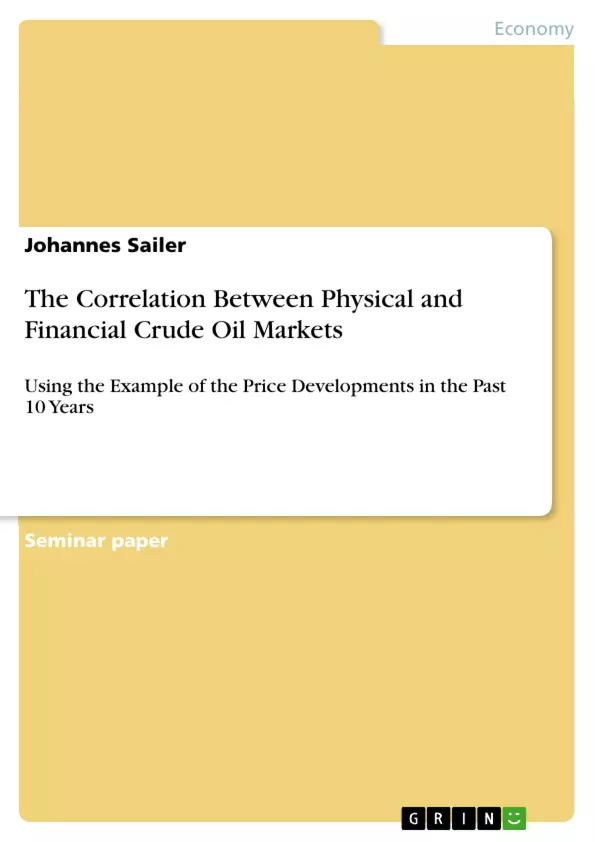Crude oil is currently the most important source of energy in the world. Thanks to advanced production and extraction methods, and due to new discoveries, the available reserves have grown over the last ten years. During this period of time, oil prices rose considerably. These increases in price are associated with the increasing energy demands of growing economies across the planet and a shifting of weight between the physical and financial oil market.
The goal of this work is to examine the correlation between physical and financial crude oil markets as well as establish an explanation for the drastic increase in crude oil price in the past decade.
The work is organized as follows: To begin, the characteristics of crude oil as well as its value chain are presented and examined. This is followed by an explanation of the physical and financial oil trade. To conclude, the fundamentals of the world oil market and the financial oil trade are examined to determine the relevance of causation with respect to the recent price increase.
Inhaltsverzeichnis (Table of Contents)
- Introduction
- World Oil Market
- Physical and economic characteristics of crude oil
- Value chain
- Physical and Financial Oil Trade
- Players on the physical and financial oil market
- Physical oil trading: Spot and forward transactions
- Commercial trading with „paper oil“: Futures trading
- Cause Analysis of Crude Oil Increase in the last Decade
- The influence of fundamental data on oil price development
- The influence of the financial markets on the oil price development
- Conclusion
Zielsetzung und Themenschwerpunkte (Objectives and Key Themes)
This work aims to explore the correlation between physical and financial crude oil markets and provide an explanation for the significant rise in crude oil prices over the past decade. It investigates the characteristics of crude oil, its value chain, and the mechanisms of both physical and financial oil trading. Furthermore, the paper analyzes the factors influencing oil price fluctuations, focusing on the interplay of fundamental data and financial market dynamics.
- Correlation between physical and financial crude oil markets
- Analysis of crude oil price increases in the past decade
- Characteristics and value chain of crude oil
- Dynamics of physical and financial oil trading
- Influence of fundamental data and financial markets on oil price development
Zusammenfassung der Kapitel (Chapter Summaries)
- Introduction: Introduces the importance of crude oil as a primary energy source and highlights the significant price increases in the past decade. The paper's objectives and organization are outlined.
- World Oil Market: This section discusses the physical and economic characteristics of crude oil, including its exhaustibility, low demand elasticity, and heterogeneity. It also examines the value chain of the oil market, encompassing production, refining, and distribution.
- Physical and Financial Oil Trade: This chapter delves into the various players involved in the physical and financial oil markets, including producers, refiners, traders, and financial institutions. It explores different trading mechanisms, such as spot and forward transactions for physical oil, and futures trading for financial oil.
- Cause Analysis of Crude Oil Increase in the last Decade: This chapter investigates the factors contributing to the rise in crude oil prices over the past decade. It analyzes the influence of fundamental data, such as global demand and supply, and explores the role of financial markets in driving price fluctuations.
Schlüsselwörter (Keywords)
The primary keywords and focus topics of this work include crude oil, physical and financial markets, oil price dynamics, exhaustibility, demand elasticity, heterogeneity, value chain, trading mechanisms, fundamental data, financial markets, price volatility.
- Quote paper
- Johannes Sailer (Author), 2012, The Correlation Between Physical and Financial Crude Oil Markets, Munich, GRIN Verlag, https://www.grin.com/document/191197



